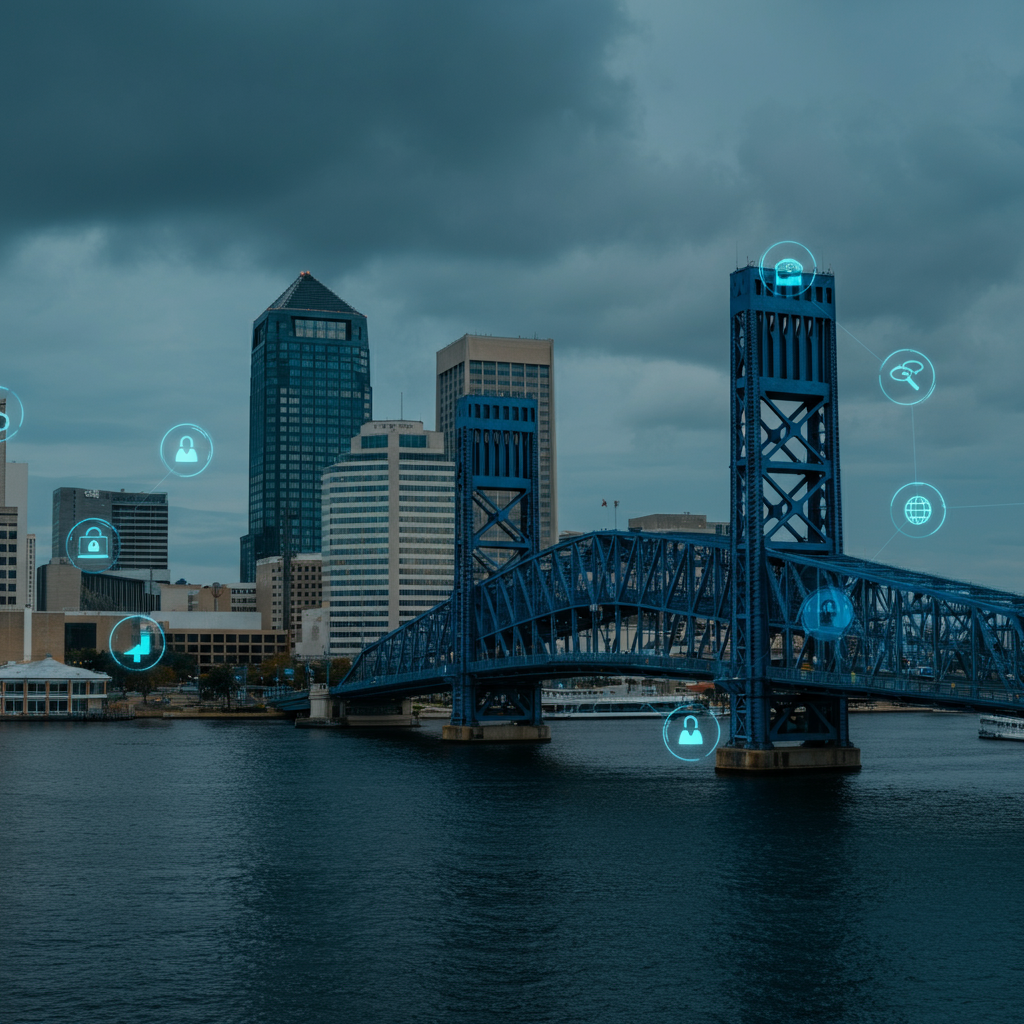Introduction
The interconnected nature of modern businesses means that computer networks are essential to daily operations. But what happens when these networks face disruptive challenges? This question was brought to light during the recent Jacksonville computer network issue, which caused widespread disruptions and highlighted critical vulnerabilities in IT infrastructure.
This blog post examines the root causes of the Jacksonville computer network issue, its impact on city services, and the valuable lessons IT professionals can learn to prevent similar disruptions in the future.
What Happened During the Jacksonville Network Crisis?
On a seemingly ordinary Wednesday, Jacksonville’s network infrastructure faced unprecedented challenges, leading to citywide service outages. Critical websites, including Jacksonville.gov and JaxReady.com, became inaccessible. Communication lines, such as calls to 630-CITY, were disrupted, and mobile applications for city services also ceased functioning.
Initially, the issue was attributed to “configuration problems,” but a deeper investigation revealed that hardware failure was the underlying cause. Though city officials assured there was no cyber-attack or security breach involved, the incident raised significant concerns about the reliability of existing IT systems.
For many departments, the outage forced a fallback to manual processes. For instance, operations in the Duval County Courthouse transitioned to paper documentation during the downtime, a stark contrast to the efficiency provided by operational digital systems.
Why Did It Matter?
The Jacksonville computer network issue was not just an IT problem; it affected the efficiency of public services and the trust residents had in their governing systems. Here’s a closer look at its cascading effects:
- Operational Delays: City services that relied on network connectivity were brought to a standstill.
- Financial Costs: Shifting to manual processes increases labor costs and reduces productivity.
- Public Trust: The disruptions heightened concerns about the reliability and preparedness of Jacksonville’s IT systems.
The high-profile nature of the outage positions it as a case study for IT professionals worldwide to reflect on network reliability, crisis management, and future-proofing existing technologies.
Key Lessons Learned from the Jacksonville Network Outage
1. Proactive Maintenance is a Must
The Jacksonville issue stemmed from a hardware failure. IT teams should conduct regular health checks on network hardware and replace aging or underperforming components before they fail.
Best practices for proactive maintenance:
- Create a hardware replacement schedule based on lifecycle benchmarks.
- Monitor network performance continuously to preemptively detect potential failures.
- Conduct routine system audits to identify vulnerabilities in infrastructure.
2. Robust Redundancy is Crucial
No organization should rely on a single point of failure. Jacksonville’s hardware failure highlights how the absence of redundancy can lead to widespread service disruption.
What you can implement:
- Backup systems: Use redundant hardware for critical systems.
- Cloud services: Incorporate cloud-based backups to ensure data accessibility.
- Geographic redundancy: Deploy systems across multiple data centers in different locations.
3. Effective Crisis Communication is Non-Negotiable
During the Jacksonville outage, manual processes had to fill the gap. However, clear communication with both internal teams and the public could have mitigated panic and frustration.
What you can do:
- Create a crisis communication plan outlining steps to inform employees, stakeholders, and users.
- Use multiple communication channels, such as emails, text alerts, and social media.
- Provide frequent updates, even if only to confirm that a solution is being sought.
4. Plan for Non-Malicious Failures Too
Organizations often prioritize cybersecurity to defend against attackers. However, as seen in Jacksonville, hardware or configuration errors can be just as disruptive. IT leaders should balance their resources across both threat prevention and infrastructure reliability.
5. Train Staff for Contingencies
The courthouse’s switch to paper processes illustrates the need for operational backup plans. Employees should understand how to handle outages and rely less on technology when systems fail.
Ensure teams are trained in the following areas:
- Manual workflows for critical operations.
- Data recovery processes.
- Crisis scenarios to encourage adaptability.
The Role of AI and Modern Infrastructure in Preventing Similar Crises
To modernize IT systems and enhance resiliency, more organizations are turning to AI-driven tools and smart diagnostics. Here’s how technology can help safeguard against future network issues like Jacksonville’s:
- Predictive Maintenance: AI can analyze hardware performance data to detect signs of wear before failure occurs.
- Incident Management: Automated tools can provide real-time alerts and generate solutions during outages, reducing downtime.
- Scalable Systems: Cloud-based, elastic computing can allow organizations to handle sudden demand surges or compensate for localized failures.
Jacksonville’s network crisis serves as a reminder that investing in contemporary IT infrastructure pays significant dividends in availability and reliability.
Actionable Steps for IT Teams to Build More Resilient Networks
- Assess Infrastructure Regularly: Create a baseline for performance metrics and use tools to track deviations.
- Craft a Disaster Recovery Plan: Include backup solutions for data, staff responsibilities, and alternative workflows.
- Invest in Testing and Training: Simulate network disaster scenarios to prepare teams for quick and effective responses.
- Engage Stakeholders: Clearly communicate the importance of IT investments to management and decision-makers within your organization.
One Final Thought
The Jacksonville computer network issue underscores how even seemingly minor technical problems can have widespread ramifications. For IT professionals, the takeaway is clear: prioritizing proactive maintenance, implementing redundancy, and ensuring solid emergency procedures are essential to ensuring resilience in an increasingly digital, interconnected world.
If you’re ready to fortify your organization’s IT systems to avoid similar outages, consider beginning with tools like predictive monitoring or AI-based diagnostics. Learn from Jacksonville’s lessons—not the hard way.

